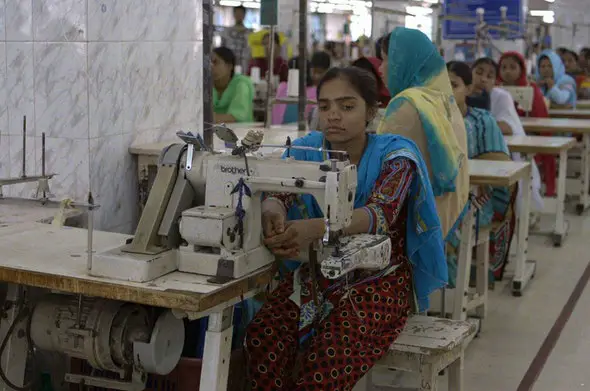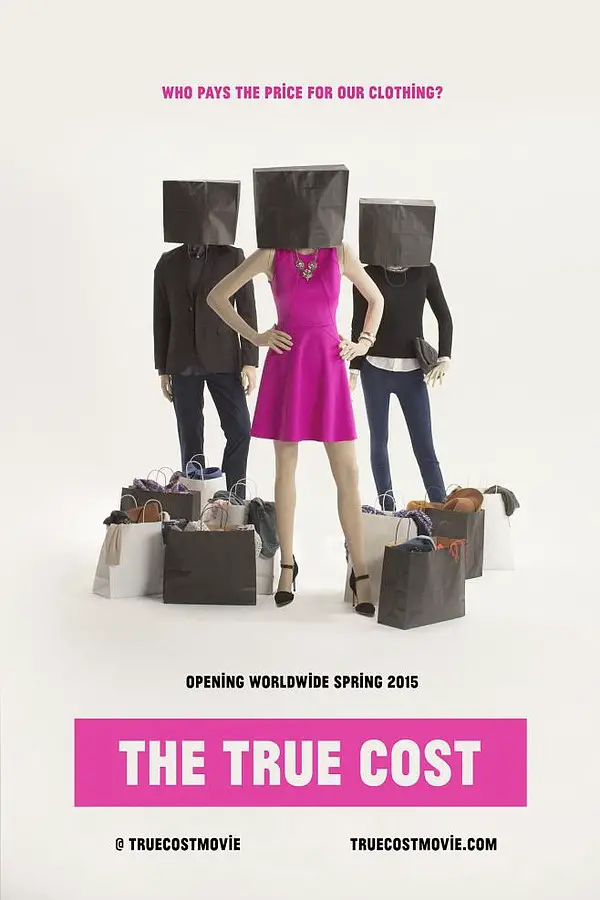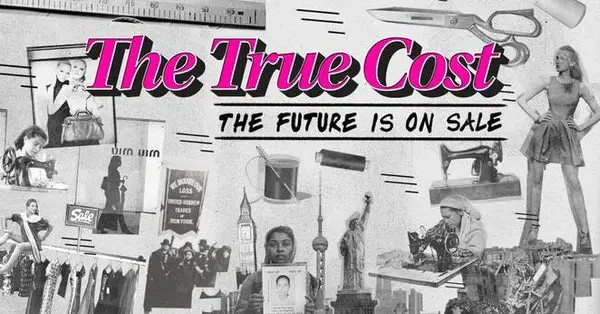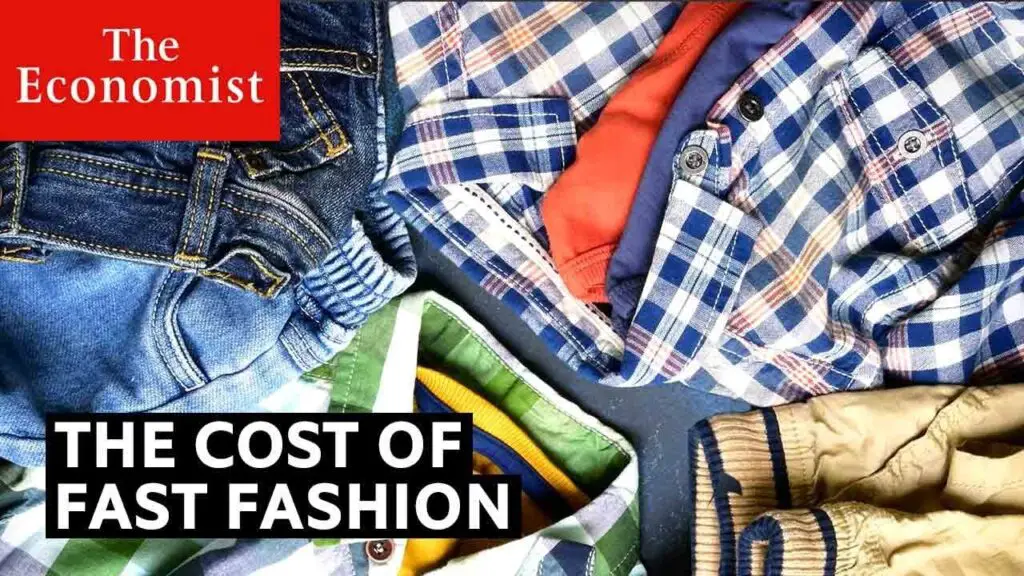Introduction
Fast fashion has become a prevailing trend in the world of clothing, offering stylish and affordable options that appeal to the masses. As a frugal fashion enthusiast, I understand the allure of these budget-friendly choices and the impact they have on our wallets. However, it is essential to delve deeper and truly comprehend the true cost of fast fashion.
The Price Tag of Fast Fashion
When we see that eye-catching $10 shirt or those trendy $20 jeans, it’s easy to get carried away and snatch them up without a second thought. But let’s consider the bigger picture. While the initial price may seem like a steal, the hidden costs lurking behind fast fashion can be staggering. From environmental harm to labor exploitation, the true cost of our clothing extends far beyond the price tag.
Environmental Consequences
Fast fashion relies on quick turnaround times and mass production, which takes a toll on the environment. From the excessive use of natural resources to pollution caused by toxic chemicals in dyeing and finishing processes, the fashion industry is a significant contributor to environmental degradation. By purchasing and supporting fast fashion, we unknowingly contribute to these destructive practices.
Ethical Concerns
Behind the glittery appeal of fast fashion lies a dark reality of worker exploitation. Sweatshops and unsafe working conditions are prevalent in production facilities, where workers endure long hours for meager pay. As consumers, it is crucial that we question the ethical practices of the brands we support and consider the human impact of our purchasing decisions.
Financial Implications
While fast fashion may seem like a budget-friendly choice upfront, the low-quality fabrics and poor craftsmanship often result in garments that quickly lose their appeal. Constantly buying cheaply made clothes that fall apart after a few wears can add up, ultimately leading to a higher overall cost. Investing in quality pieces may seem pricier initially, but they tend to be more durable and can save money in the long run.
Understanding the true cost of fast fashion is essential for making more informed and conscious purchasing decisions. By considering the environmental and ethical implications, as well as the financial impact, we can choose to support sustainable and ethical fashion alternatives that align with our frugal lifestyle. So next time you find yourself drawn to a fast fashion bargain, pause for a moment and reflect on the true cost hidden behind that tempting price tag.

What is Fast Fashion?
Fast fashion is a term that has become increasingly popular in recent years, especially in the world of fashion. But what does it mean exactly? Well, fast fashion refers to the production and consumption of trendy and inexpensive clothing, often manufactured at a rapid pace to keep up with the latest fashion trends. As a result, these garments are often made with low-quality materials and are not meant to last for a long period of time.
The Appeal of Fast Fashion
One of the main reasons why fast fashion has gained so much popularity is the affordable prices. With clothes available at incredibly low prices, it’s easy to see why many people are drawn to fast fashion retailers. After all, who doesn’t love a good bargain? However, what many shoppers fail to realize is that there is a hidden cost associated with these low prices.
The True Cost of Fast Fashion
While fast fashion may seem like a wallet-friendly option, it comes with a high environmental and social cost. The constant churn of clothing production leads to excessive resource consumption, including water, energy, and raw materials. Additionally, many fast fashion brands rely on exploitative labor practices, often outsourcing production to countries where workers are paid extremely low wages and forced to work in dangerous conditions.
The Impact on Your Wallet
Contrary to popular belief, fast fashion may not be as economical as it initially seems. Although the cheap prices may seem tempting, the poor quality of fast fashion garments often means that they don’t stand the test of time. These clothes are more prone to wear and tear, requiring frequent replacements and costing you more money in the long run. By investing in higher-quality, timeless pieces, you can actually save money by avoiding the constant need to update your wardrobe.
fast fashion might offer affordable prices, but it comes with a hidden cost. The environmental and social impact, coupled with the long-term financial implications, make it clear that there is a true cost associated with fast fashion. By understanding these consequences and making more mindful fashion choices, we can all play a part in reducing the negative impact of the fast fashion industry on our wallets and the world.

The Rise of Fast Fashion
Fast fashion is a term used to describe clothing that is produced quickly and inexpensively, allowing consumers to stay up-to-date with the latest trends at an affordable price. Brands that specialize in fast fashion often release new designs on a weekly basis, encouraging consumers to constantly update their wardrobe.
Fast fashion has gained immense popularity due to its affordability and accessibility. It allows fashion enthusiasts to experiment with different styles without breaking the bank. However, it is important to understand the true cost of this seemingly affordable fashion trend.
The Environmental Impact
One of the major downsides of fast fashion is its detrimental impact on the environment. The production and disposal of clothing in such a rapid manner leads to an increase in carbon emissions, water pollution, and waste generation. Many fast fashion brands rely on cheap labor and contribute to unethical working conditions in factories overseas.
The Financial Burden
While fast fashion may seem like a cost-effective option, it can actually have a negative effect on your wallet in the long run. The low-quality materials used in fast fashion garments tend to wear out quickly, requiring frequent replacements. Additionally, the constant need to stay on top of the latest trends can result in impulse purchases and overspending.
Adopting a Frugal Fashion Approach
To avoid the pitfalls of fast fashion, one can adopt a more frugal fashion approach. This involves investing in timeless, high-quality pieces that will last longer and require fewer replacements. Thrifting, swapping clothes with friends, and repairing items can also be sustainable and budget-friendly alternatives.
while fast fashion may offer immediate gratification, it comes at a significant cost to both our wallets and the environment. By embracing a frugal fashion mindset, we can make more conscious choices and reduce the negative impact of our fashion choices on both our finances and the world around us.

Negative Impacts of Fast Fashion
Fast fashion has a significant negative impact on the environment. One of the key environmental consequences is the excessive use of natural resources. The fast fashion industry heavily relies on the production of cheap, low-quality clothing made from materials such as cotton and polyester. These materials require vast amounts of water for their cultivation and production processes, leading to water scarcity and pollution. Additionally, the pesticides and chemicals used in the production of these materials further contribute to environmental degradation.
Another environmental consequence is the enormous amount of waste generated by the fast fashion industry. With its rapid turnover of trends and seasons, fast fashion promotes a culture of disposable clothing. This encourages consumers to buy more, discard items quickly, and contribute to the already overflowing landfills. The production and disposal of fast fashion garments also release harmful greenhouse gases into the atmosphere, exacerbating the issue of climate change.
Exploitation of Workers
Behind the glamorous facade of fast fashion lies a dark reality of worker exploitation. The demand for low-cost clothing drives brands to outsource their production to countries with lax labor regulations and lower wages. This often leads to poor working conditions, long hours, and underpayment of garment workers. The relentless pace of fast fashion further intensifies the exploitation, as workers are forced to meet tight deadlines with little regard for their wellbeing.
Low Quality and Short Lifespan
Fast fashion garments are typically characterized by their low quality and short lifespan. The emphasis on quantity over quality results in poorly made clothing that easily falls apart after only a few wears and washes. This planned obsolescence deliberately forces consumers to constantly replace their wardrobe, ultimately costing them more over time. Moreover, the production process for these garments often involves harmful chemicals that can damage the fabric’s integrity, shorten its lifespan, and further contribute to environmental degradation.
the true cost of fast fashion extends far beyond its impact on our wallets. It is crucial to understand the negative consequences of this industry to make informed choices and promote sustainability in our fashion consumption. By opting for ethically made and durable clothing, we can not only save ourselves money in the long run but also contribute to a healthier planet and fairer treatment of workers. So next time you’re tempted to buy that cheap and trendy top, think twice about the hidden costs behind it.

Hidden Costs of Fast Fashion
Fast fashion may seem like a bargain, but the true cost goes far beyond the price tag. As a frugal fashion enthusiast, I believe it’s important to understand the impact of fast fashion on our wallets. Let’s explore some of the hidden costs associated with this trend.
Cheaply Made, Quickly Worn Out
One of the biggest downsides of fast fashion is its poor quality. These clothes are often mass-produced using cheap materials, resulting in garments that wear out after just a few uses. As a result, we find ourselves constantly replacing these items, spending more money in the long run.
Fast fashion also takes a toll on the environment. The production of these cheaply-made clothes involves excessive use of water and energy, as well as the release of harmful chemicals into the environment. Additionally, the disposal of fast fashion contributes to the growing problem of textile waste in landfills.
Behind the scenes of fast fashion lie ethical concerns that cannot be overlooked. The relentless pursuit of low prices often leads to poor working conditions for garment workers, with low wages and long hours being a common occurrence. Supporting fast fashion means supporting these harmful labor practices.
Sustainable Alternatives
Thankfully, there are alternatives to fast fashion that are more sustainable and wallet-friendly. Thrifting, for example, is a great way to find unique, high-quality pieces at affordable prices. Additionally, investing in timeless wardrobe staples and learning basic mending skills can help extend the lifespan of our clothes.
the true cost of fast fashion goes beyond its initial price. From the environmental consequences to the ethical concerns, this trend takes a toll on both our wallets and the world around us. By understanding these hidden costs, we can make more informed choices and embrace a more frugal and sustainable fashion lifestyle. Let’s prioritize quality, longevity, and ethical fashion choices for a better future.

Financial Consequences
Fast fashion may seem like a tempting and affordable way to stay on top of the latest trends, but the true cost goes far beyond the price tag on those trendy clothes. As a frugal enthusiast, I have delved into the subject to understand the impact of fast fashion on my wallet, and the results are eye-opening.
Impulse Buying
One of the key financial consequences of fast fashion is impulse buying. The constant bombardment of new styles and discounted prices can easily lure us into making unplanned purchases. I’ve been guilty of falling into this trap myself, enticed by the allure of a bargain and that “must-have” outfit. However, these impulsive buys add up quickly and can wreak havoc on our budgets. Before we know it, we have a closet full of clothes we hardly wear, regretting those spontaneous purchases.
Frequent Purchases
Fast fashion retailers thrive on the constant turnover of new inventory. This means they are constantly releasing new collections, enticing consumers to keep buying. As a result, we may find ourselves caught in a cycle of frequent purchases, constantly chasing the next trend. While each individual item may seem reasonably priced, the cumulative effect on our wallets can be staggering. We need to be mindful of these frequent purchases and consider whether we truly need that new outfit or if it’s just another fleeting trend.
Higher Replacement Costs
Fast fashion focuses on producing cheap and low-quality garments, which often means frequent wear and tear. These clothes may start to fall apart after just a few washes or lose their shape and color. As a result, we find ourselves needing to replace these items sooner than we expected, leading to higher replacement costs. Investing in higher-quality, timeless pieces may initially require a greater upfront investment, but in the long run, we can save money by not constantly replenishing our wardrobes.
In understanding the financial consequences of fast fashion, we can make more informed decisions and embrace a more frugal lifestyle. By curbing our impulse buying habits, being conscious of frequent purchases, and investing in quality clothing, we can not only save money but also reduce our impact on the environment. So, let’s think twice before succumbing to the allure of fast fashion and instead opt for a more sustainable and budget-friendly approach to our wardrobes.
Social Consequences
Unethical Practices
Fast fashion, with its rapid production and low prices, has a hidden cost that goes beyond what we pay at the checkout counter. Unfortunately, these seemingly inexpensive clothing items often come with a hefty ethical price tag. When we opt for fast fashion, we unknowingly support unfair labor practices and inhumane working conditions that exploit workers, often in developing countries. These workers are subjected to long hours, low wages, and unsafe working conditions. As an informed consumer, I believe it is crucial to be aware of the human rights violations that accompany the production of fast fashion.
Supporting Unsustainable Production
In addition to ethical concerns, fast fashion also contributes to unsustainable production processes. The demand for cheap and trendy clothing leads to outsized growth in the fashion industry, which places immense strain on the environment. The production of fast fashion relies on the use of synthetic materials and harmful chemicals, which pollute our air, water, and soil. Moreover, the production of these garments requires a significant amount of water, energy, and natural resources, contributing to climate change and environmental degradation. By buying into fast fashion, I am unknowingly endorsing these unsustainable practices, which have long-term consequences for our planet.
Contributing to Waste
Fast fashion’s emphasis on constantly changing trends and disposable clothing items has resulted in a staggering amount of waste. Impacted by the pressure to keep up with the latest styles, many consumers discard their garments after wearing them only a few times. Consequently, landfills are filled with piles of clothing that take years to decompose, releasing harmful chemicals into the environment throughout the process. As I evaluate the true cost of fast fashion, it becomes evident that my choices have a direct impact on waste production.
By understanding the social consequences of fast fashion, including unethical practices, unsustainable production, and waste, I can make informed decisions about my clothing purchases. It is essential to consider alternatives such as sustainable fashion, thrifting, and investing in quality clothing that will last. As a frugal individual, I understand the importance of looking beyond the price tag and considering the true cost of my fashion choices. Only then can I begin to mitigate the negative impact on both my wallet and the world around me.
Emotional Consequences
Fast fashion may seem like the perfect solution to updating your wardrobe on a budget, but when we dig deeper, we start to realize the true cost it has on our emotions and overall well-being.
Lack of Durability
One of the most significant emotional consequences of fast fashion is the lack of durability in the clothing we purchase. It is no secret that fast fashion brands prioritize producing garments quickly and cheaply over creating high-quality pieces that will last. This constant cycle of buying and disposing of poorly made clothes leaves us feeling frustrated and dissatisfied with our purchases. We spend our hard-earned money on items that quickly deteriorate, leading to a sense of disappointment and regret.
Fashion Fads and Discontentment
Fast fashion relies heavily on creating and promoting constant trends, enticing us to buy the latest styles to keep up with the ever-changing fashion landscape. However, this constant need to chase trends leads to a sense of discontentment within ourselves. We may find ourselves constantly wanting to update our wardrobe to stay relevant, but in doing so, we never truly feel satisfied with what we have. This perpetual dissatisfaction can negatively impact our emotional well-being, as we start to question our self-worth and our ability to keep up with the latest fashion fads.
Feeling Overwhelmed by Choices
One of the downsides of the fast fashion industry is the overwhelming amount of choices it offers. With new collections dropping every week, it is easy to feel overwhelmed by the sheer number of options available. This constant bombardment of choices can cause decision fatigue, leading to feelings of anxiety and stress. We may find ourselves spending more time and energy on choosing what to buy, only to end up feeling overwhelmed and regretful afterwards.
Fast fashion’s impact on our emotions is undeniable. The lack of durability, constant pursuit of trends, and overwhelming choices all contribute to a sense of dissatisfaction and discontentment. Choosing a more frugal approach to fashion may allow us to break free from this emotional rollercoaster and find true satisfaction in our wardrobe choices. So, next time you reach for that trendy but flimsy garment, consider the emotional cost it may have on your well-being.
Sustainable Alternatives to Fast Fashion
When it comes to fashion, staying on-trend and up-to-date can easily become a drain on our wallets. With the rise of fast fashion, it has become increasingly tempting to continuously purchase cheap, low-quality clothing. However, the true cost of fast fashion goes beyond the price tag. From the exploitation of workers to environmental destruction, our shopping habits can have far-reaching consequences. With that in mind, it’s crucial to explore sustainable alternatives to fast fashion that can both save us money and reduce our impact on the planet.
Thrift Stores and Secondhand Shopping
One of the most affordable and sustainable ways to dress well is by exploring thrift stores and secondhand shops. These treasures troves offer a wide variety of clothing at a fraction of the cost of new items. Many items are gently used or even brand new, providing an opportunity to score unique pieces while reducing waste. Additionally, by purchasing from thrift stores, you are giving a second life to clothing that would otherwise end up in landfills.
Clothing Swaps and Borrowing
Another great option for frugal fashionistas is participating in clothing swaps or borrowing. Organize a clothing swap with friends or join local swap events in your community. This allows you to refresh your wardrobe without spending a dime. Additionally, consider borrowing clothes from friends or family for special occasions or to try out new styles without the commitment of a purchase. Sharing clothing not only saves money but also promotes a sense of community and reduces overall consumption.
Sustainable and Ethical Brands
If you prefer to buy new clothing, consider purchasing from sustainable and ethical brands. These brands prioritize fair wages for workers, use environmentally friendly materials, and promote transparency in their supply chains. Although these items may have a higher upfront cost, the higher quality can often result in longer-lasting clothing, saving money in the long run. By supporting these brands, you are sending a message to the fashion industry that ethical and sustainable practices are important to consumers.
Thrifting and Secondhand Shopping
Why thrifting and secondhand shopping can save you money
One of the easiest ways to save money on your fashion purchases is by exploring the world of thrifting and secondhand shopping. Not only is this a budget-friendly option, but it also has numerous benefits for the environment and your own personal style.
Thrifting refers to shopping at thrift stores, consignment shops, or even attending yard sales and flea markets. These places offer a wide variety of clothing items, often at a fraction of the original price. By buying secondhand, you can find unique and fashionable pieces that may no longer be available in regular retail stores.
The environmental impact of thrifting and secondhand shopping
In addition to being wallet-friendly, thrifting and secondhand shopping also have a positive impact on the environment. The fast fashion industry is notorious for its high carbon footprint and excessive waste. By opting for pre-owned clothing, you are reducing the demand for new production, which means fewer resources are being used and less clothing ends up in landfills.
Tips for successful thrifting and secondhand shopping
To get the most out of your thrifting and secondhand shopping experience, it’s important to keep a few tips in mind. Firstly, have a clear idea of what you’re looking for and remain patient while browsing, as these stores may have a wide range of items to sift through. Secondly, don’t be afraid of alterations or repairs, as many secondhand items may need a little TLC to reach their full potential. Lastly, be open-minded and willing to try on different styles and sizes, as you never know what hidden gems you may find.
Capsule Wardrobes and Minimalism
The Key to Frugal Fashion
When it comes to fashion, we are often enticed by the latest trends and the allure of a constantly updated wardrobe. However, this fast fashion mentality can quickly drain our wallets and lead to a cluttered and unsustainable lifestyle. That’s where the concept of capsule wardrobes and minimalism comes in.
What is a Capsule Wardrobe?
A capsule wardrobe is a thoughtfully curated collection of essential clothing items that can be mixed and matched to create a variety of outfits. The idea is to have a smaller selection of high-quality pieces that are versatile and timeless. By focusing on quality over quantity, we can save money in the long run, as these items are more likely to last longer and withstand multiple seasons.
The Benefits of Minimalism
Minimalism goes hand in hand with the concept of a capsule wardrobe. It is about embracing a simpler and more intentional way of living, making conscious choices about the items we bring into our lives. By adopting a minimalist mindset, we can reduce waste, save money, and find contentment in owning fewer possessions.
How Can Capsule Wardrobes Save Money?
Firstly, with a capsule wardrobe, you will no longer feel the need to constantly shop for new clothes. Instead, you will focus on investing in quality pieces that truly represent your style and that you will enjoy wearing for years to come. This means less impulsive spending and fewer regrets about purchases that sit untouched in the back of your closet.
Secondly, having a smaller wardrobe means you can better assess what you already own and identify gaps in your collection. This helps you make informed shopping decisions and avoid buying duplicates or unnecessary items. Additionally, a well-curated capsule wardrobe makes it easier to create stylish and put-together outfits, eliminating the need for buying new clothes just for special occasions or to keep up with ever-changing trends.
By embracing the concepts of capsule wardrobes and minimalism, you can not only save money but also reduce your environmental impact and enjoy a more simplified and fulfilling fashion experience. Remember, it’s not about depriving yourself of style, but rather about making thoughtful choices that align with your values and financial goals.
Conclusion
Throughout this article, I have discussed the impact of fast fashion on your wallet. We have explored the various ways in which indulging in the trend of buying cheap, trendy clothes can have hidden costs that go beyond the initial price tag.
Fast fashion is notorious for its negative environmental impact. The production of inexpensive clothing often involves the use of synthetic fibers, which are derived from non-renewable resources and contribute to pollution. Additionally, the disposal of these clothes leads to a significant amount of textile waste, further harming the environment.
Ethical Considerations
Another aspect to consider when it comes to fast fashion is the unethical labor practices often involved in its production. Many fast fashion brands outsource their manufacturing to developing countries where workers are subjected to low wages, long hours, and unsafe working conditions. Supporting these brands indirectly perpetuates this cycle of exploitation.
Quality and Durability
Fast fashion items are typically made to be disposable, with poor quality materials and construction. This means that they often don’t last long and need to be replaced frequently, resulting in more spending in the long run. Investing in higher quality, durable clothing may seem more expensive upfront, but it will save you money in the long term.
The Frugal Alternative
Being fashion-forward doesn’t mean you have to indulge in cheap, fast fashion trends. Embracing a frugal lifestyle can help you save money while still looking stylish. Thrifting, exploring vintage stores, or participating in clothing swaps are great options to find affordable, unique pieces without breaking the bank.
In conclusion, fast fashion offers seemingly cheap trendy clothes but at a higher cost to our wallets, the environment, and the people involved in the production process. Understanding the true cost of fast fashion allows us to make more informed decisions and consider alternatives that align with a frugal lifestyle. Let’s be more conscious consumers and make choices that benefit both ourselves and the world around us.
